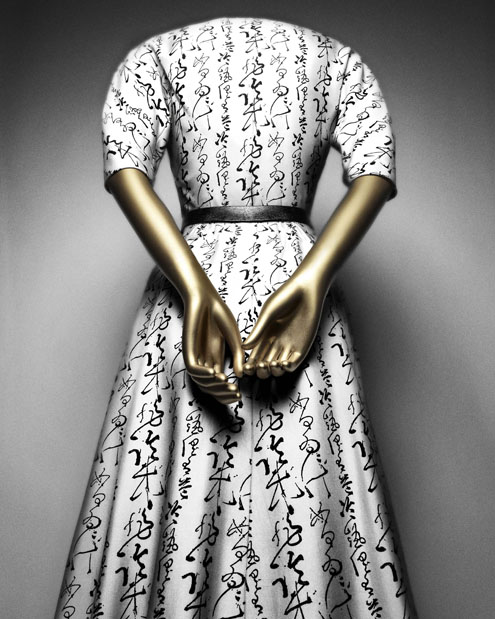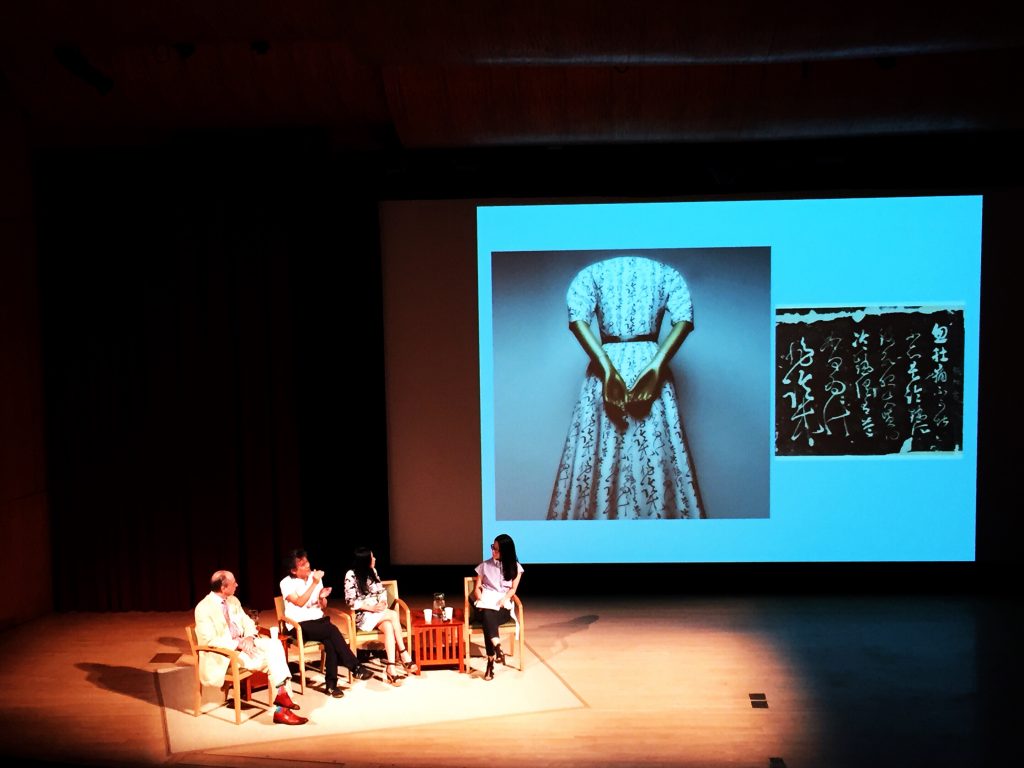Chinese Art and Western Fashion: An East-West Dialogue Held at The Met
by Zijun Shi
It was a brilliant Sunday afternoon on June 21st when The Metropolitan Museum of Art welcomed an exciting panel to discuss Chinese art’s influence on Western fashion in complement the current China: Through Looking Glass exhibition. Three dominant thought leaders on the topic—Chinese fashion designer Vivienne Tam, Maxwell K. Hearn, Chairman of the Department of Asian Art at the Met and playwright David Henry Hwang—came together to share their ideas while Elizabeth Peng, journalist and editor whose expertise lies in East-West fashion, threaded the conversation together as moderator.
“It was such a pleasure to have three brilliant East-West minds to discuss the subject of China’s aesthetic influence on the West,” says Elizabeth. “These are thinkers who have devoted so much of their professional lives to elevating people’s awareness. Their insights were endless and inspired and showed, if anything, how far evolved people’s perceptions of China have come and how it’s reemergence as a global power leaves more cultural bridging to be done.”
In the discussion, these innovators conjured up different—and thought-provoking—ideas on issues as vast as the how to increase the communication between Eastern and Western cultures through contemporary and traditional art to what China’s meteorically growing power could bring to the global art platform. Maxwell suggested a wise exchange between contemporary and traditional art via curating spaces to help offer more comprehensive views of appreciation and understanding. Meanwhile, Vivienne pointed out that the current exhibition China: through Looking Glass can act as an inspiration for Chinese designers to look at their own culture through a different lens and viewpoint.
“I am more inspired by Vivienne than ever, particularly how she stayed true to herself and let her culture shape her designs naturally—without caring about the more Western-admired aesthetic in China,” says Anna Park, a Parsons fashion design student.
Maxwell made an entertaining example when explaining the gaping holes that sometimes exist when Western designers appreciate Chinese with the help of a 1951 Dior cocktail dress on view called “Quiproquo” printed with Chinese calligraphy. He explained that people who are unable to understand the meaning of calligraphy tend to treat it like a painting, instead of appreciating the movement and strokes of the words. On the particular dress in question, Monsieur Dior must have been very in love with this beautiful calligraphy because he chose it as a print. “But after research,” Maxwell said, “We found that it was written about stomach-ache!” A huge wave of laughter erupted in the room as his point was aptly, and humorously, made.
As the talk curtained, the panel looked towards the future, pontificating on how the Chinese people can evolve their own cultural identities and perceptions in the face of a newly globalized world. Would it be in the way that Japanese fashion designers evolved in Paris when their culture was similarly shifting and expanding, or would it be a different path for the Chinese? One thing is for certain: when massively influential institutions such as The Met take time and pride into making the Chinese discussion a priority, hastened evolution is bound to happen—or at the very least, discussed.
___________________________
About the author
Zijun Shi is a current BBA Strategic Design and Management Student from China. She is an art lover whose passion lays in creativity. She is trying to blend her knowledge on business management into her love for art.
The enthusiasm of sharing information on amazing activities with people is what encourages her all the time.
Recent Posts
 School of Fashion Newsletter
School of Fashion Newsletter
- SOF Newsletter- April 2021 April 5, 2021
- SOF Newsletter- March 2021 March 3, 2021
- SOF Newsletter- February 2021 February 8, 2021
- SOF Newsletter- December 2020 December 1, 2020
- SOF Newsletter- November 2020 November 2, 2020
- SOF Newsletter- October 2020 October 6, 2020
- 4/1: Fashion News, Events, Opportunities, & More April 1, 2020
- 3/4: Fashion News, Events, Opportunities, & More March 4, 2020
- 2/26: Fashion News, Events, Opportunities, & More February 26, 2020
- 2/19: Fashion News, Events, Opportunities, & More February 19, 2020


